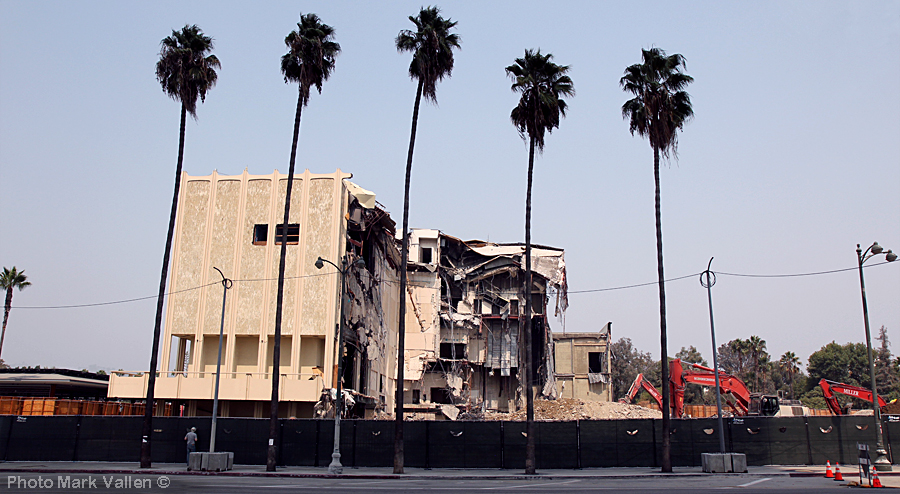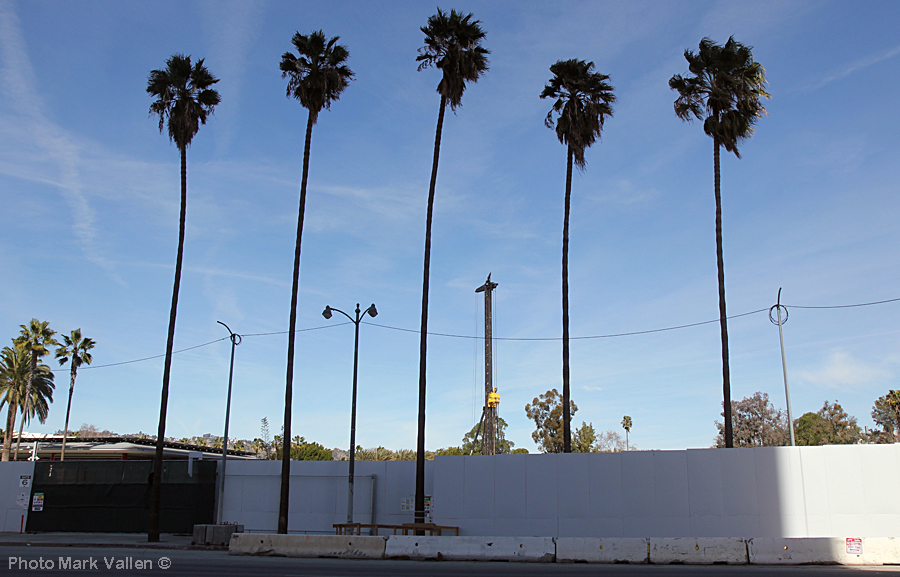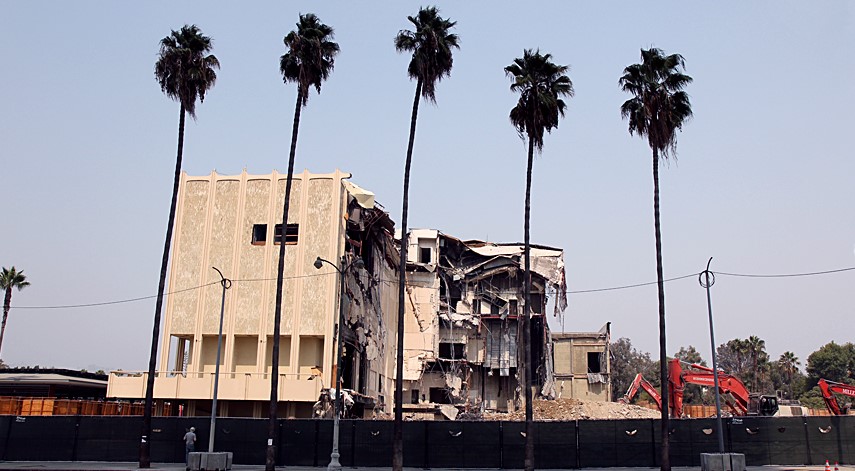The Rise and Fall of LACMA
As a Los Angeles born artist, the tale of the Los Angeles County Museum of Art (LACMA) is a personal story for me; I’m actually older than the museum. My anecdotes will offer a glimpse of its glory days, and my photo essay will depict its inevitable physical destruction under its Director and Chief Executive Officer, Michael Govan. Mr. Govan decided to demolish the old LACMA, and so commissioned Swiss architect Peter Zumthor to design a new LACMA. The price of this unnecessary project? A purported $750 million dollars.
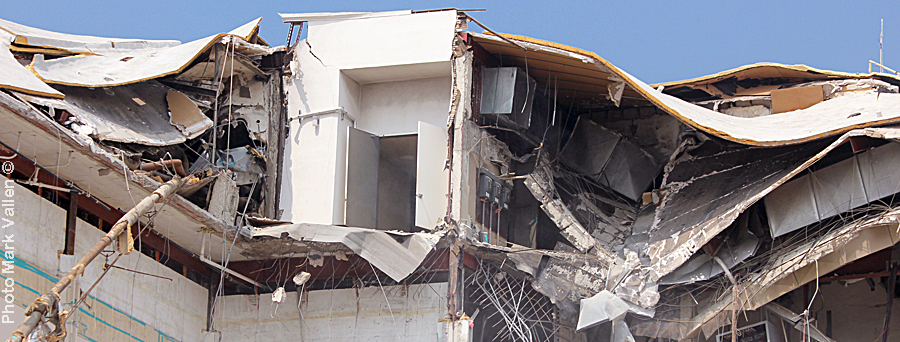
Over the decades I attended countless exhibits at LACMA, and spent innumerable hours wandering though the museum’s halls, sketching, studying, drinking it all in. The following are but a few of the exhibits that not only inspired me, but impacted the wider community of Los Angeles and beyond.
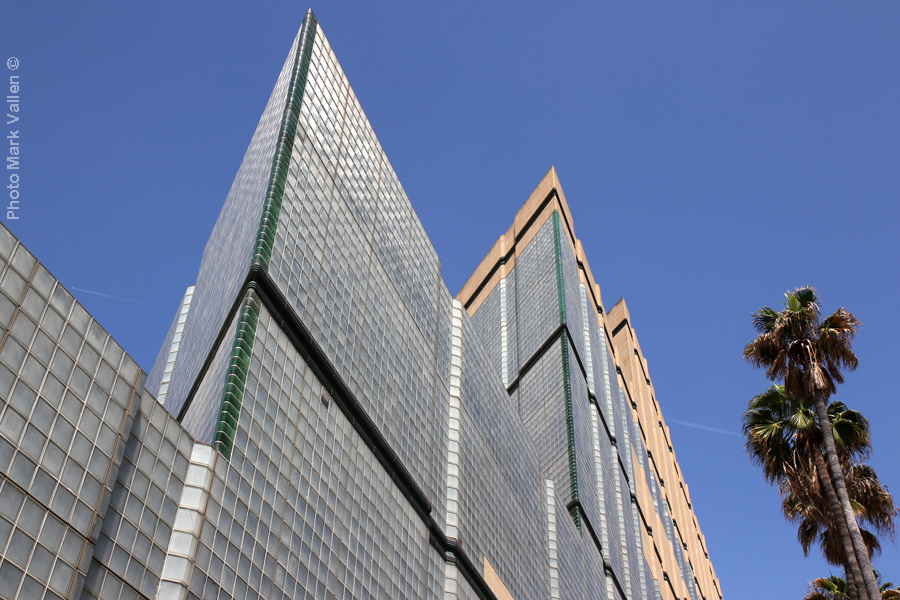
In April 1965 I was a budding 12-year-old artist dabbling in oil painting when my working class parents took me to Wilshire Boulevard for the grand opening of LACMA. It was an event never to be forgotten. Designed by William Pereira, the museum complex was surrounded by a man-made shimmering lagoon. The campus was evocative of Italy’s city of Venice, or the ancient Mexican Aztec capital city of Tenochtitlan—itself a metropolis built on a lake and crisscrossed with canals, bridges, and waterways. Fireworks were set off over LACMA at the end of the festivities, and I marveled at the display mirrored in the museum’s reflecting pool.
Of course LACMA is built on land where crude oil, methane gas, and tar have bubbled up from beneath the ground for thousands of years, creating giant pools of oil and tar that are still active; an outstanding locale for an art museum. The land is also home to the landmark La Brea Tar Pits. By 1966 the tar and oil oozed into LACMA’s once sparkling lagoon, despoiling the ersatz Venice and eventually necessitating the draining and removal of the body of water. This unfortunate event can be seen as a metaphor for LACMA’s destiny.

In 1966 my mother took me to see the Edward Kienholz exhibit at LACMA, his “Back Seat Dodge” assemblage was sending polite society into a tizzy—the LA Board of Supervisors called it “blasphemous” and many wanted the offensive Dodge coupe removed. As a 13-year-old I was surprisingly well versed in DaDaism and Surrealism, but Kienholz drove home to me how art could inflame and provoke… well beyond my then adolescent dreams.
I was 23 when the United States celebrated its 1776-1976 Bicentennial. As part of that observance LACMA presented Two Centuries of Black American Art—the first survey of art by Black Americans held in the U.S. While it featured the work of 63 artists, it was the art of Charles White that truly captured my imagination. Because of his humanistic and poignant figurative realism, in particular his sensitive black and white drawings and lithographs, I always considered him to be a mentor; the LACMA exhibit poster for the show featuring a drawing by White remains in my collection.
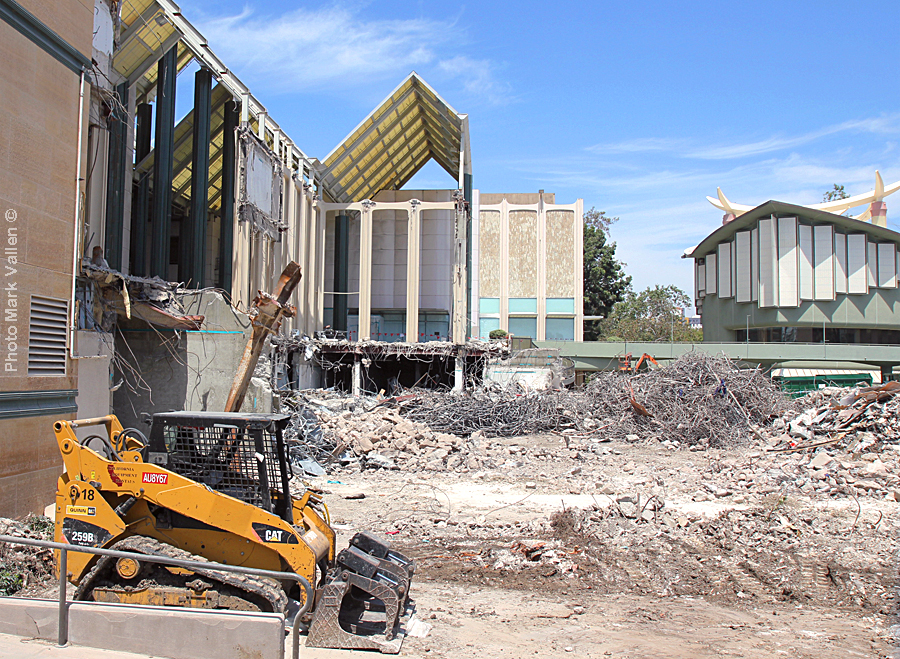
I was 25 when I stood in line for hours to see Treasures of Tutankhamun (Feb. 15-June 15, 1978), the most well attended exhibit in LACMA’s entire history. 53 stunning artifacts from the tomb of the young Egyptian Pharaoh were on display, including his hauntingly beautiful burial mask. Some 1.2 million Angelenos viewed the show during its four month run.
At 33 years of age I attended the groundbreaking exhibit Impressionist to Early Modern Paintings From the U.S.S.R. (June 26-Aug. 12, 1986). I rejoiced in seeing works from the Hermitage and Pushkin museums; Cezanne, Monet, Renoir, Gauguin, Van Gogh, Matisse, Picasso, and many others. I still have hanging in my home LACMA’s exhibit poster for the show that features Guaguin’s Aha Oe Feii (Are You Jealous?).
The exhibit was presented during the Cold War, when the U.S. and Soviets were slugging it out in Afghanistan, Nicaragua, and beyond. Of the 40 paintings exhibited, 33 had never been seen in the United States. Given the political environment, it was a miracle the show happened at all. The Republican business magnate Armand Hammer (1898-1990), a trustee of LACMA with close ties to Soviet leaders, made possible the cultural exchange.
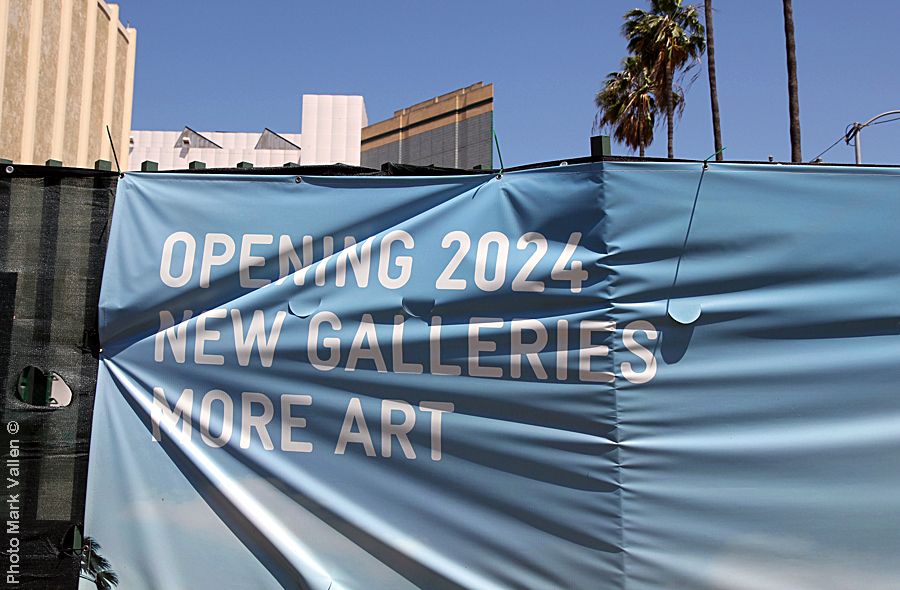
I was 38 when I viewed Degenerate art: the fate of the avant-garde in Nazi Germany, LACMA’s most scholarly—and dangerous exhibit (Feb. 17-May 12, 1991). It was a chilling recreation of the Entartete Kunst (Degenerate Art) show mounted by the Nazis in 1937 Munich.
That year the Nazis banned and seized art they viewed as Jewish, communist or “anti-German”; the art was confiscated from museums, galleries, and private collections and derided as the product of insanity. It was then displayed in the Entartete Kunst exhibit. Art was purposely hung lopsided, lit poorly, and placed next to slogans painted on the walls reading “Nature as seen by sick minds,” “Madness becomes method,” and the like. When the exhibit run concluded the Nazis auctioned off what art they could, and destroyed the rest by fire.
All of this was recreated by LACMA. Remarkably, 175 surviving works from the original Nazi show were displayed. What’s more, they were shown with the same cockeyed hanging, pitiable lighting, and mocking wall slogans! The exhibit was a blistering curatorial denunciation of Nazi horror, but also a warning against totalitarian systems of culture and thought. Since then LACMA has never mounted such a formidable exhibit, and in these overly sensitive politically correct times, it likely won’t do so again.

I attended many other world-class exhibits at LACMA before the tenure of Michael Govan. The museum continued to be an invaluable cultural institution, until Mr. Govan took over as director in February of 2006. I always said he would destroy LACMA, but I had no idea that my dire premonitions would end up being an actual physical reality.
Govan became the perfect postmodern museum director, a promoter of kitsch, installation art, and conceptual art; someone at home in the circus world of vapid art stars and tasteless collectors. But instead of advocating the museum as an institution that acquires, conserves, and displays works of historic import and technical skill, he became a purveyor of the museum as citadel of entertainment and spectacle. And so Govan arranged the exhibitions Stanley Kubrick (Nov 1, 2012–Jun 30, 2013) and Tim Burton (May 29–Oct 31, 2011).
Ironically, Michael Govan’s ultimate contribution to LACMA might be his having molded the museum—according to a 2016 fluff piece by CNN, into the “World’s most Instagrammed museum.” Though even there it was put in 4th place.
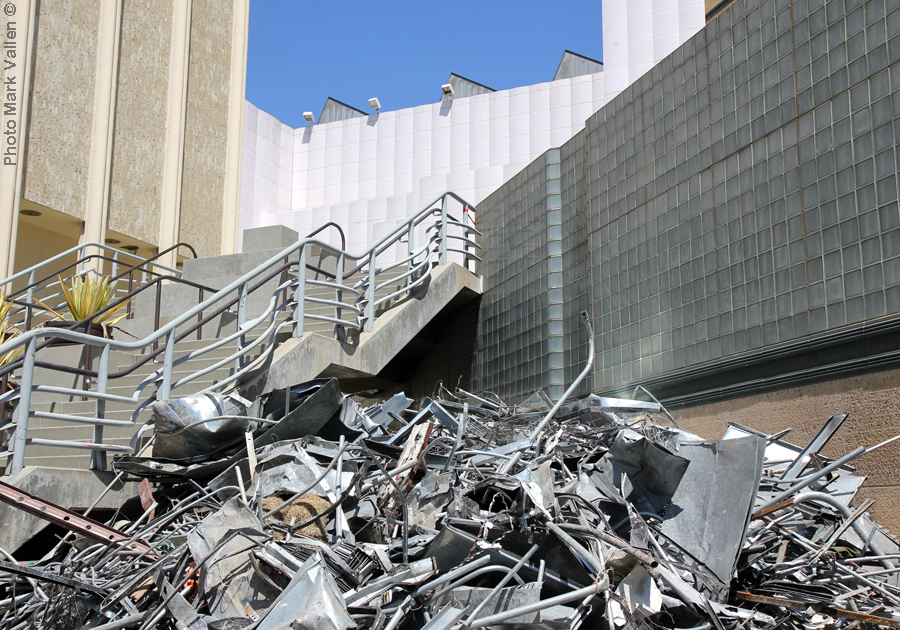
I first felt something was awry when I discovered in 2007 that Michael Govan’s annual salary as Director of LACMA was $915,000—twice the amount of a sitting U.S. President ($400,000). Investigating further I found his actual compensation, after perks, was $1,029,921 per year. LACMA provided Govan with a free $5.6 million house in Hancock Park worth $155,000 a year, according to tax fillings. Clearly, the U.S. presidency with its formidable world-shaking powers, is insignificant when compared to the directorship of LACMA.
In 2007 Michael Govan and Jeff Koons, the “King of Kitsch,” announced their plans to erect a monumental public art “sculpture” by Koons in front of LACMA. Titled Train, it would be an actual 70-foot-long steam locomotive hung from a massive 161-foot heavy construction crane; three times a day the Choo Choo Train would blow its steam whistle and spin its wheels. Of course this would give the museum the look of an entertainment theme park, but Govan compared Train to the Eiffel Tower, saying he hoped it would become “a landmark for Los Angeles.”
The Koons Train project was estimated to cost $25 million, incredibly LACMA was awarded $1 million from the Annenberg Foundation to conduct a “feasibility study” on constructing the curio. Due to the collapsing economy of the Obama years, LACMA was unable—thankfully—to raise enough money to build the banal edifice. Heaven knows where the feasibility study money actually went.

Also in 2007 Govan commissioned conceptual artist John Baldessari to design the gallery space for LACMA’s exhibit Magritte and Contemporary Art: The Treachery of Images (Nov 19-Mar 4, 2007). I always favored the Belgian Surrealist René Magritte, both for his technical skills as a realist painter and his playful wit. However, Baldessari’s scenography garnered more attention than Magritte’s sixty-eight paintings and drawings. And it didn’t help that Magritte’s beautiful oil paintings were surrounded by twaddle from collagist Barbara Kruger, plagiarist Richard Prince, and “works” from other postmodern whiz kids.
Next came a 2008 commission for a large-scale public artwork from performance and installation aesthete Chris Burden (1946-2015). He was best known for his 1971 Shoot performance piece, which involved an assistant shooting Burden in the arm at 15 feet with a .22 rifle. Naturally this hokum made Burden famous, the performance was celebrated as a reaction to nightly news reports on U.S. television regarding the Vietnam war. If so then Burden should have had himself shot with an M16 rifle with its more powerful 5.56mm round, that’s what U.S. troops used in Vietnam… but then, I’m an artistic purist.
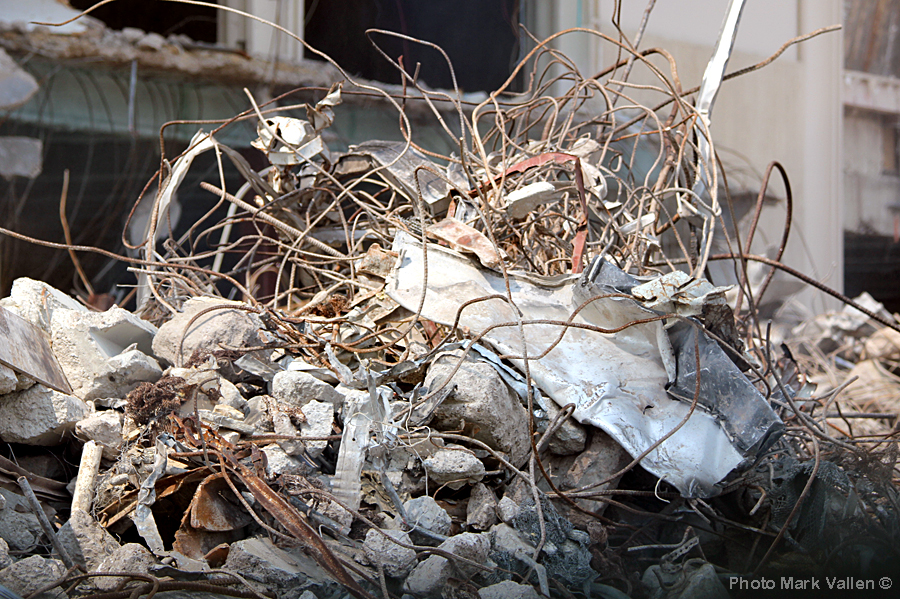
Chris Burden’s commissioned piece turned out to be Urban Light, a grid of 202 antique metal street lights that once illuminated the avenues of Los Angeles in the 1920s and ’30s. A contractor sanded the columns, painted them grey, capped them with period glass globes, wired them, then raised the street lights—as per master Burden’s instructions, in front of LACMA. There they remain, a backdrop for tourists, fashionistas and their endless selfies.
Here’s the truly grotesque thing about Urban Light. As I photographed the demolition of LACMA starting in April 2020—over the months, despite the racket of jackhammers and bulldozers, the clouds of pulverized concrete, the heaps of crumpled metal, wire, and broken cement, and the sight of LACMA’s walls crashing to the ground; people continued to obliviously flock to Urban Light for selfies. If the new LACMA is never completed they will still gather around those damnable street lights like moths to a flame.

In 2012 Govan acquired and installed Michael Heizer’s Levitated Mass for an estimated $10 million. Considered a “great sculpture” by the postmodern crowd, Levitated Mass is simply an enormous un-carved 340-ton granite boulder that straddles a deep concrete trench and path that allows people to walk beneath it. If archaeologists from the distant future ever dig through the colossal mountains of commercial detritus formally known as Los Angeles—smashed titanium bicycles, shattered liquid crystal displays, crushed cars made from carbon-reinforced plastic, mashed kevlar bulletproof vests… what on earth will they think of the 340-ton boulder?
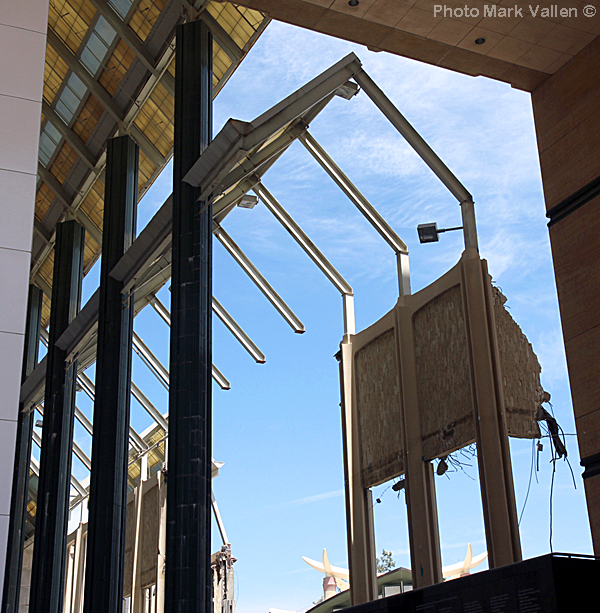
For me the coup de grâce was the Ahmanson Foundation refusing to gift LACMA with European Old Master paintings and sculptures. The decision came in Feb., 2020 after a 60 year relationship that saw the Ahmanson donate more than $130 million in art treasures to LACMA. The Ahmanson Foundation had provided the core of the museum’s European art collection, and its founder, banker Howard Ahmanson, played a pivotal role in the creation of LACMA.
The Ahmanson ended its relationship with LACMA because Govan’s new museum will not provide dedicated exhibition space for the display of permanent exhibits, which the Ahmanson acquisitions were meant for. Instead, the art will end up in offsite storage; some of it will see the light of day at the new LACMA only if selected for rotating exhibits. That means paintings by Rembrandt, Frans Hals, Titian, and many others will languish in storage. This is not how a prestigious art museum serves a community—but it is a prime example of Michael Govan’s total lack of leadership. The entire postmodern putsch is a war against art.
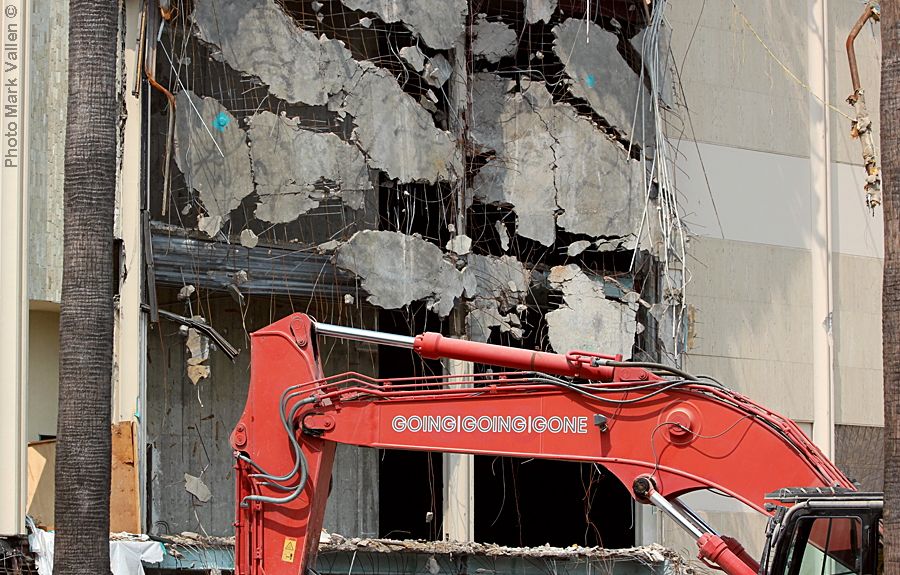
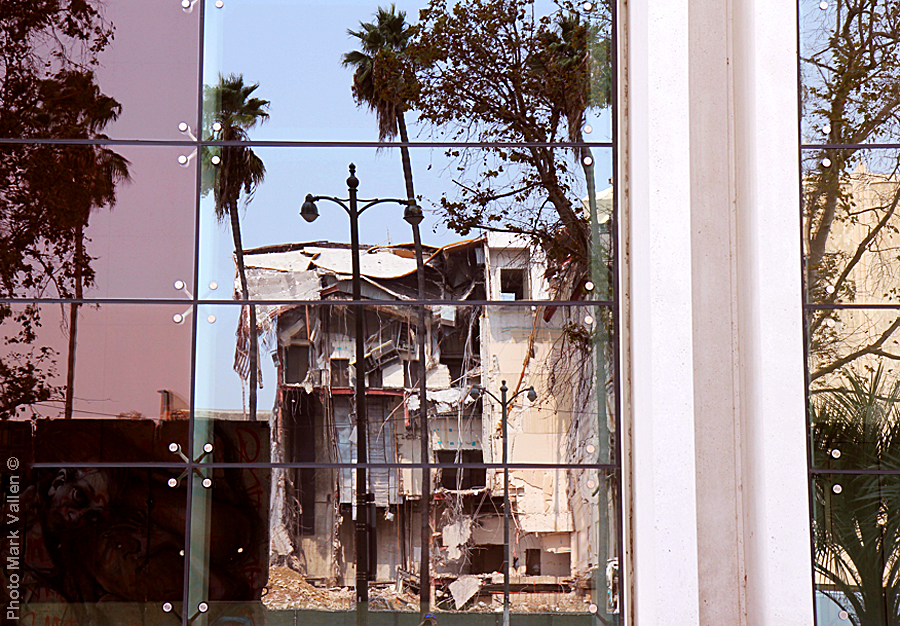
And speaking of war. As a result of his 2003 invasion of Iraq, President George W. Bush built a sprawling U.S. Embassy in that war-torn country that cost $750 million dollars—people bitterly complained that it was a complete waste of money, I know because I was one of them.
What else can $750 million purchase? In August 2020, the Trump administration signed a $750 million deal with Abbott Laboratories to buy 150 million rapid-result Covid 19 testing kits. That seemed a necessary thing in a time of pandemic, but does tearing down a first-class art museum and constructing a new one in its place for over $750 million appear to be a crucial imperative in pestilential times?
Michael Govan’s LACMA boondoggle, with its declared $750 million price tag, will likely cost more than $1 billion. Nevertheless, aside from the bold and fearless minority of art advocates who fulminate against the demolition of LACMA… who’s complaining?

“Playing in the ruins of tomorrow, today” is an old Situationist aphorism that very much describes the postmodern state of Los Angeles. In characterizing my home city to visitors I have always remarked that it reinvents itself every twenty years, tearing down the “old” for the “new.” How apropos that LA’s once celebrated art museum now lies in utter ruin. It’s an open wound on the metropolis, one that I fear will never heal.
